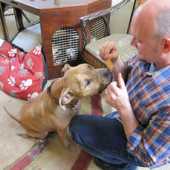POTD Garrett Jones, Scouting Report - the Good
.
Q. NOW could you get to the good?
A. Jones is listed at 230, looks 260, and when he hits 'em they stay hit. His average HR last year was over 400 feet and the exit velocity was 105 - average.
His HR's, in real games, are classic "Home Run Derby" shots, pulled to straightaway left, 425 feet. And here comes the good part -- in 2012, he got better at picking his pitch and launching it. His pull rate went up in 2012.* He's been in the majors a few years, he's acclimated, and he's launching home runs deliberately.
We're going to keep going over it until it gains some traction ... right now sabermetricians think that Flyball/Groundball ratio is either random, or just a function of a hitter's swing plane.
No, actually there is a distinct SUBSET of batted balls: that subset of fly balls that a hitter anticipates, and loads up on, and pulls in the air. Balls pulled in the air are baseball's most dangerous events, and that's the "big victory" for the batter that disappears into the sinkhole of generalized fly ball data.
Jones actually did get better at this in 2012. You can be sure that if Zduriencik's scouts are excited, this is precisely the reason why.
Dr. D is not excited, because at age 32 the reflexes are going to go, just as Jones learns his craft. But still, we have to acknowledge Jones' plusses.
.
Q. He's got quite a platoon split.
A. Yes he does. And it's not "sample size" -- it's who he is as a human being. Jones' painfully slow bat launch won't allow him to deal with lefthand pitchers (LH-on-LH cuts the reaction time down).
But now supposing that Jones is going to be STRICTLY platooned, and we mean STRICTLY platooned, well ... he did SLG .556 last year against righties. You're talking about 35 homers and 35 doubles a year, pro-rated ... Jay Bruce, Robinson Cano type power, for those games in which a righty is on the mound.
... even in 2011, before he was really comfortable in the bigs, you're talking a .462 SLG, 20 homers and 35 doubles pro-rated ... trace it all the way back and you're talking about Mike Carp's best-case analysis. ... that is, comparing [Jones vs RHP] to [Carp overall].
There's our theme again: hurry hurry hurry. Let's have Carp's best, this April 2012.
.
Q. Is this shrill?
A. No, the emphasis on 2012 is FINE with Dr. D. Then emphasize 2013 in 2013. Then emphasize 2014 in 2014. Does Billy Beane do otherwise? Do the Red Sox? Do the Rangers?
.
Q. He's an arb player.
A. Yes, so you're talking about the 2nd or 3rd bat of the winter ... we presume.
The man's 32 years old: you are talking about one and done.** He's like a rental. And that's okay by me.
.
Q. Which leaves us where?
A. They BETTER not be trading no cotton-pickin' John Jaso for this lug. But (1) deployed as a platoon guy, and (2) against the backdrop of something like a Tom Wilhelmsen conversion, Jones could wind up looking like a Beane rental.
Hey, a lot of people cried about Josh Willingham last year. Jones could give you a coupla platoon years on that level.
.
BABVA,
Dr D
** 18:10:9 ratio last year is better than career generally; am sure if you iso'ed vs RHP's and flyballs you'd see more "back leg specials."
**Maybe two and through. Like Branyan.
.
Links for December 3, 2012
High level of radioactivity measured in rain over eastern Ontario, Canada. youtube.com
San Onofre nuclear plant in southern California may have been sabotaged. rt.com
Nuclear Regulatory Commission says that temporarily closed San Onofre nuclear plant can start operating again without safety hearing. rt.com
Fukushima disaster inspires safety features for Georgia nuclear reactors. cnn.com
The luxury of a morning to work
Today I had almost an entire morning all to myself. Although I work from home part-time (I work as an after-school nanny in the afternoons), sometimes I feel as though other obligations frequently fill my mornings, until I have little or no time to get my work done. The last couple of weeks have been some of the worst examples of this phenomenon.
Of course, it should have been -- and was -- expected that the holiday week would hijack my work time. Not only was it Thanksgiving week, but my husband's 40th birthday was that Tuesday, so both of us took the day off to celebrate. So that week was, for all intents and purposes, only a two-day week for me (Monday and Wednesday).
Then last week, my husband's alternator quit, and I had to take him back and forth to work most of the week until his car was fixed. That takes a couple of hours out of my day, not to mention I find it harder to settle in and get work done when I've just arrived home from someplace (rather than waking up in the morning and sitting down at the computer with my coffee, as I usually do).
So waking up today and realizing that I had the entire morning and early afternoon ahead of me, waiting to be filled with whatever I wanted to fill it with, was a very nice feeling. The day also felt like it crept by slowly, giving me plenty of time to get done what I wanted to do, which was a nice feeling -- other days, I feel like the minutes are slipping through my fingers like water, and I'm struggling to get anything done before I run out of time.
Having a day like this made me realize how important it is -- for my work and for my peace of mind -- to have more days like this. I think from now on I need to make a firm commitment to resisting anyone's (or anything's) efforts to hijack my days with other obligations!
What about you? How do you make sure that other people or responsibilities don't take over your time when you work from home?
Beck puts Obama in jar of pee; no one cares.
Glenn Beck, once a seemingly unstoppable force of cultural disaster, has become more and more irrelevant as the days go by. Ever since his show was canceled, Beck has struggled to remain in the public eye. His latest non-stunt was supposed to give Liberals a taste of their own medicine, but it utterly failed thanks to Beck's complete lack of understanding of how art works. No surprise there!
The courage to treat oneself
Lately, I've been struggling with a lot of high blood sugars. It took me a long time to realize what was going on: I was failing to adjust my insulin doses as I should, because I was afraid of crashing.
Finally, when my sugars routinely climbed into the 300s and even the 400s and higher, I realized I was going to have to do something about it. The first thing I started doing was checking my blood sugar more often. While that did help, it only did so much: I was still correcting to bring down my highs far too frequently.
So at last, faced with no other option if I wanted to regain my health, I started tinkering with my dose. I started by raising my long-acting insulin, Lantus, by a unit every day. That helped, but it seemed like perhaps more was needed. I raised the dose another unit, for a total of two more units than I used to take. Then I started crashing.
It wasn't the horrible, no good, very bad experience that I'd dreaded for so long. The next day, I cut back down to one extra unit a day, and continued checking my blood sugar more often. That seemed to do the trick.
I may need to cut it back down that unit, back to my original dose, sometime soon. Sometimes I find that I have to raise my dose for only a short time before I knock it back down again. Perhaps it's stress, or an illness, or a change in exercise or diet that causes me to temporarily need more insulin.
In any case, I have to remember not to be afraid to change my dose as needed. Sometimes I think that failing to change it, and letting my sugars go on getting higher and higher, actually exacerbates the problem until I do something to bring my sugars back under control. Then my body seems to normalize, and I can go back to my old dose.
I know those with type 2 diabetes have to go about things a little differently, as they can't change pill dosages without their doctor's involvement. But if you have to tinker with insulin dosages on your own, do you ever find that fear of crashing is stopping you from doing what would most likely make you feel better in the long run?
The importance of a good farrier
This has been the year of bad farriers -- not just for me, but for many people at my barn. It started when my younger horse, the one that has been in training, was trimmed too short in late spring or early summer. I switched to a farrier that several other people at the barn had just started using, too, and for several months she seemed to be the answer -- but she started laming other people's horses by trimming them too short, as well, so I switched again, this time to a friend of my trainer's.
The newest farrier just trimmed my horses on Saturday, and so far I am cautiously optimistic. They seem to be moving well, and my thin-soled youngster is not sore, which is a good sign. But after all the problems I've had this year, I've learned not to make snap judgments. We will wait to see whether they continue moving well, and whether I continue liking this new farrier after a couple of trims, before I decide for sure that I like him.
I've also learned that "good enough" isn't always actually good enough. My first farrier, the one who trimmed my youngster too short in the spring, had been trimming my older horse for four and a half years. I knew his quality had been slipping for quite some time, and it had gotten pretty bad of late, but I had history with him so I was willing to give him the benefit of the doubt. Until he lamed my baby and cost us several months of training time while his feet grew back.
The second farrier seemed to be exactly what we needed. She trimmed a little on the short sign, which worked spectacularly well for my older horse, and she (claimed she was) willing to be careful on the younger, thin-soled horse. (I had x-rays done to confirm the younger one's club feet, and they showed that he has extremely thin soles.) But she seemed to sometimes have problems trimming people's horses too short. The first time we all gave her the benefit of the doubt. The second time, the owner of the horse that got trimmed too short was a bit on the crazy side, so everyone figured she was just crying wolf. The third time, though, the problem could no longer be ignored, and we all switched -- again.
My newest farrier -- well, I'm not totally sold on him yet. He seemed to do a good job, but he didn't exactly knock my socks off -- though I thought the last one had, so perhaps a good, understated, basic trim is what I should have been looking for all along. For now, I'm reserving judgment, but I've learned my lesson -- at the first sign of shoddy work, I will bail. Never again will I risk my horses' hoof health in order to give a farrier the benefit of the doubt!
Confessed serial killer commits suicide in Alaskan jail cell
Until this weekend, the only thing the public knew about Israel Keyes was that he was being held in jail in Alaska for the kidnapping and killing of 18 year-old barista Samantha Koenig. Now we learn that A) he was a confessed serial killer responsible for at least seven other deaths, and B) he committed suicide in his jail cell.
Nulcear Weapons 11 - The Bombing of Hiroshima, Japan
After the rejection of the demand for unconditional surrender by the Japanse government in July of 1945, the United States President, Harry S. Truman, decided to drop an atomic bomb on the Japanese city of Hiroshima. During World War II, Hiroshima on the Japanse island of Honshu was home to several military bases and industrial facilities that supplied the Japanese war effort. There were headquarters of commanders of the Japanese home island defense force, assembly areas for troops, communication centers and other military targets. Five antiaircraft installations protected the city. There were some concreted buildings in the middle of the city but most of the homes, municipal buildings, barracks and factories were constructed of wood. The population of Hiroshima was estimated to be around three hundred and fifty thousand.
On August 6, 1945, the Enola Gay B-29 commanded by Paul Tibbets took off from an airbase on Tinian, one of the islands in the Northern Marians. The Enola Gay rendezvoused with two other B-29 bombers over Iwo Jima and they headed Japan. After hours of flight, the squadron arrived in over Japan and Captain William Parsons armed the uranium gun-type bomb known as Little Boy. The Japanese radar picked up the small fleet of American planes but did not activate air defenses for just a few planes. One of the accompanying planes flew over Hiroshima, reporting that the weather was clear and then turning out to sea.
Tibbets in the Enola Gay began his bombing run at 8 AM. The bomb was dropped at 8:15 from a height of about thirty thousand feet. After falling for about forty seconds, the bomb exploded at a height of about two thousand feet above the ground. The Enola Gay managed to travel about ten miles before the shock wave hit. The bomb missed that target by eight hundred feet and detonated over a clinic with a force of about sixteen tons of TNT with less than two percent of the uranium undergoing nuclear fission. The radius of total destruction was about 1 mile with fires spread over a radius of about four miles. The Japanese estimated that about seventy percent of the buildings in Hiroshima were destroyed. Around seventy thousand people or about twenty percent of the population were killed in the blast and firestorm with another twenty percent being injured. It is estimated that eventually about half the population of the city died from the immediate effects of the bomb or from radiation related illnesses in the years following the attack.
When communications with Hiroshima suddenly failed, the Japanese military were confused but they knew that no major air raid had taken place. They dispatched a plane to fly over Hiroshima to assess the situation. They saw a huge cloud of smoke of the devastated ruins of Hiroshima and were astonished by the destruction.
After the detonation of the first atomic bomb ever used in warfare, President Truman broadcast an announcement about the terrible new weapon that the United States possessed. He warned the Japanese that if they did not surrender immediately, they could expect “a rain of ruin from the air, the likes of which has never been seen on this earth.”
The Japanese government was still not ready to accept unconditional surrender. They were holding out for the following conditions:
- The preservation of the existing government
- Disarmament and demobilization to be carried out by the existing Japanese military
- No occupation of the Japanese islands
- Punishment for war crimes to be carried out by the Japanese government.
Hiroshima after the bombing from japanfocus.org:
The "Young Earth" dinosaur hunters
Here is something I didn't know until recently: a lot of the people who are out hunting for relict populations of dinosaurs are Young Earthers who are out to disprove evolution.
Things You Should Probably Know: Does The Five-Second Rule Work?
Vsauce does for in-depth science what 5-Second Films does for comedic brevity. And entertainingly, speaking of "five seconds," let's examine the 5-second rule. Does it work? And more importantly, how does molecular adhesion work in the first place? Grab your breakfast, kick up your feet and prepare to expand your brain.







